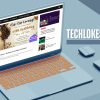Regardless of the type of items a thrift store offers, donations are essential for reaching objectives.
Not only are donations needed for thrift stores to remain functional, but they’re also necessary for stores to help the local community. Owners must find ways to encourage donations positively, without leaving a negative impression in the minds of potential donors or clients.
This guide can help.
Simplify the Donation Process
In a perfect world, people would be motivated by the kindness of their hearts to drive to a thrift store and unload all their donations personally. Unfortunately, this isn’t reasonable to expect from the majority of people these days. Put simply, today’s families are busy, with barely any time for rest, let alone time for social causes that go above and beyond.
There are many things that thrift stores can do to make donating easier for everyone involved. For example, many thrift stores schedule pickups, either at nearby locations or at individual homes. These options are more convenient for donors, which makes it more likely for them to support local efforts.
Don’t pickups represent a significant expense and hassle for thrift stores? Not with the help of modern technology. Modern thrift store POS system features often include convenient pickup scheduling. Donors may even be able to self-schedule pickup times or see the closest drop-offs online. Other features include self-service kiosks and online receipts for tax purposes that speed things up for donors.
Provide Many Dropoff Options
What if thrift stores aren’t able to handle pickups at individual homes because of personnel issues? They can still make donations as convenient as possible by providing a range of ways people can donate items:
- Secure donation boxes at partnering business parking lots
- Driver-attended box trucks
- 24/7 thrift-store donation boxes
Even seemingly simple changes can have a large effect. For example, if a store normally accepts donations at the rear entrance, is it possible to implement a drive-through option instead?
Even though donors probably only save five or 10 minutes, the convenience factor can make them more likely to contribute. Instead of viewing donation as a hassle, they’re more likely to see it as something they can take care of quickly on the way to work or while running errands.

Understand the Donor Mindset
A common misconception is that people are strongly motivated to donate because of charitable feelings. This is the case for some people, but not that many.
In today’s hectic climate, people who donate often do so because it’s convenient and beneficial for them. In other words, they probably have a secondary motive in addition to helping out the community.
This motive can be wanting to get rid of clutter, showing respect for a loved one’s final wishes, or simply hoping to avoid the hassle of a garage sale. A large number of people donate because they view it as preferable to simply throwing items away. Moms who are cleaning out their child’s closet often have this habit.
Thrift stores shouldn’t criticize this attitude. Instead, they should welcome (high-quality) donations from any source, regardless of whether the person cares about the mission or not. What matters is the donation itself, not what motivates it.
For this reason, attempting to increase donations by appealing to feelings of guilt or compassion toward less-fortunate individuals isn’t generally very effective. It’s good to have a mission statement, believe in it, and promote it in marketing, but this mission isn’t going to be a major driving force in prompting donations.
Show Gratitude
Once thrift stores understand that many potential donors have a quid pro quo mindset, it’s possible to find ways to encourage donations by appealing to this attitude. Some stores provide vouchers that donors can redeem for free items. For example, for $50 worth of items, donors could receive a voucher for a free $10 item.
Doesn’t this cut into the already tight profit margins for thrift stores? Not necessarily. Few donors redeem the vouchers, and those that do are more likely to return to donate other items in the future.
The benefits of being generous to donors generally outweigh the costs. The idea is to produce a feeling of satisfaction, a “reward” for donating. This feeling makes people more likely to tell friends and family members about the store, which is good for both donations and sales.
At the very least, gratitude means saying thank you. Even an automatic email can do wonders for online donations.
Read Also:






















